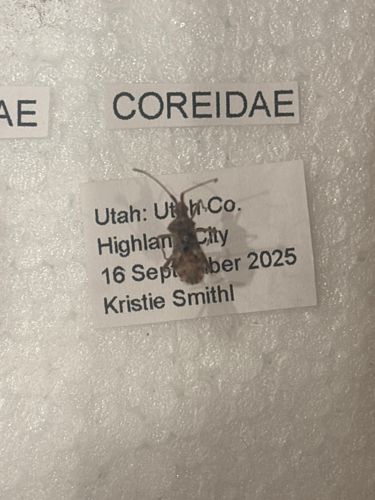Leaf-footed Bug (or potentially a Squash Bug, a type of leaf-footed bug)
Scientific Name: Coreidae (family level, specific genus/species cannot be determined from image)
Order & Family: Order: Hemiptera, Family: Coreidae
Size: Generally, Coreidae members range from 10 to 40 mm (0.4 to 1.6 inches) in length, though the specific bug in the image appears to be on the smaller side of this range given context.

Natural Habitat
Typically found in agricultural fields, gardens, and areas with their host plants, such as squash, pumpkins, various fruits, nuts, and weeds.
Diet & Feeding
Mostly phytophagous (plant-feeding), using piercing-sucking mouthparts to feed on plant sap, developing seeds, and fruits. Many are significant crop pests.
Behavior Patterns
They undergo incomplete metamorphosis (egg, nymph, adult). Adults and nymphs feed on plants, often congregating on preferred host plants. Some species, like squash bugs, are known for emitting a foul odor when disturbed.
Risks & Benefits
Potential Risks: Many species within the Coreidae family are considered agricultural pests, causing damage to crops like squash, melons, tomatoes, pecans, and other fruits and vegetables, leading to yield reduction and scarred produce. They can directly damage plants by feeding and may transmit plant diseases. Benefits: In certain ecosystems, some species may contribute to seed dispersal or act as a food source for other animals, but their pest status often outweighs these benefits in human-centric evaluations.
Identified on: 9/19/2025